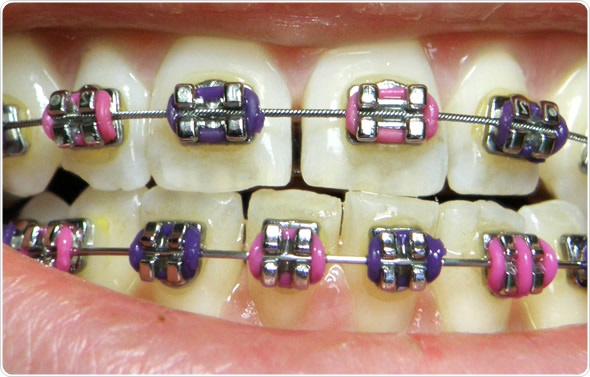Comprehensive Overview to Orthodontics Treatments for Fixing Dental Imbalances
In the realm of orthodontics, the trip to achieving a perfectly aligned smile entails a myriad of procedures customized to correct oral imbalances. From typical dental braces to unseen aligners and even medical options, the field of orthodontics supplies an array of services to attend to varying degrees of dental irregularities. Comprehending the complexities of each procedure, including their systems, advantages, and potential downsides, is crucial in making educated choices about one's orthodontic therapy. As we navigate via the comprehensive overview to orthodontic treatments for correcting oral imbalances, the complex details of each technique will unravel, clarifying the course toward a unified and practical dental alignment.
Orthodontic Procedures Overview

Normal adjustments and tracking are critical components of orthodontic treatment to make certain development is on track and to make any kind of required alterations along the way. By going through orthodontic treatments, clients can not only accomplish a straighter smile however additionally boost their general oral wellness and feature.
Traditional Braces: How They Work
When thinking about orthodontic treatments for oral imbalances, standard braces stand apart as a reliable technique for correcting teeth positioning. Typical braces include brackets, cords, and bands that interact to apply continual pressure on the teeth, progressively moving them right into the preferred alignment. The braces are affixed to the teeth making use of an unique adhesive, and the wires are threaded with the braces. By readjusting the tension of the cables, orthodontists can control the instructions and force applied to each tooth, guiding them into appropriate placement over time.
One secret aspect of just how conventional dental braces work is the procedure of bone improvement. As pressure is related to the teeth via the braces, the bone bordering the teeth is improved to sustain the brand-new tooth settings. This makeover is essential for the long-lasting security of the dealt with alignment. Individuals will certainly need routine adjustments at the orthodontist's workplace to ensure the dental braces remain to use the proper pressure for efficient teeth activity.
Unnoticeable Aligners: Pros and Disadvantages
These clear, custom-made trays are basically undetectable when worn, making them an enticing choice for individuals looking for a more cosmetically pleasing orthodontic treatment. People can eliminate the aligners before consuming or brushing their teeth, lowering the danger of food obtaining stuck in the home appliance and simplifying the cleansing process.

Surgical Orthodontic Options
Surgical treatments in orthodontics present viable alternatives for resolving complex dental misalignments that may not be successfully settled via traditional orthodontic therapies. While invisible aligners and typical braces can fix several orthodontic concerns, certain cases need medical treatment to accomplish ideal results. Surgical orthodontic alternatives are usually advised for severe malocclusions, substantial jaw disparities, and cases where the underlying bone framework requires adjustment to achieve proper placement.
One typical surgical orthodontic treatment is orthognathic surgical treatment, which includes rearranging the jaws to remedy useful issues such as difficulty talking or chewing. This surgical treatment is frequently carried out in collaboration with an orthodontist who helps straighten the teeth prior to and after the procedure. Surgical orthodontics may likewise include treatments to subject affected teeth, remove excess gum cells, or reshape the jawbone to develop an extra harmonious facial account.
Prior to thinking about surgical orthodontic choices, people undergo a comprehensive examination to identify the need and potential advantages of such treatments. cumming orthodontics. While surgical procedure might appear daunting, it can substantially boost both the feature and aesthetics of the smile in instances where traditional orthodontic therapies fall short
Retainers and Post-Treatment Treatment

Post-treatment treatment entails adhering to the orthodontist's directions click carefully. This may include appropriate dental health methods, attending follow-up appointments, and wearing the retainers as recommended. Failing to abide by post-treatment treatment instructions can cause relapse, where the teeth slowly relocate back in the direction of their initial settings. Regular retainer wear, excellent dental hygiene, and routine dental check-ups are vital for Get the facts preserving the results achieved with orthodontic surgery and guaranteeing the lasting security of the corrected oral positioning.
Conclusion
In conclusion, orthodontic treatments supply different options for correcting dental misalignments. Surgical orthodontic choices are available for more serious misalignments. Overall, orthodontic treatments can properly boost oral health and wellness and visual look.
As we browse with the extensive guide to orthodontic treatments for fixing oral imbalances, the detailed information of each method will unfold, losing light on the course towards a unified and useful oral placement. - cumming invisalign
One of the most usual orthodontic treatments is the use of dental braces, which consist of metal brackets and cables that use mild stress to gradually move teeth into the wanted position.When considering orthodontic treatments for dental imbalances, typical dental braces stand out as a tried and true approach for dealing with teeth positioning. Additionally, undetectable aligners may not be ideal for intricate orthodontic concerns that need more substantial teeth motion, as they are commonly advised for moderate to moderate instances. Retainers are tailor-made orthodontic devices made to hold teeth in their fixed settings after the conclusion of orthodontic therapy.